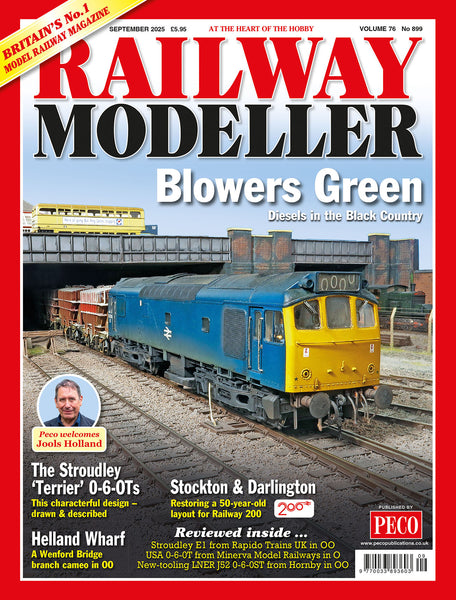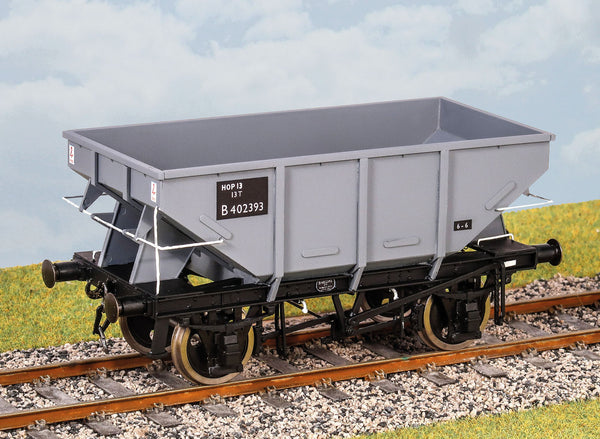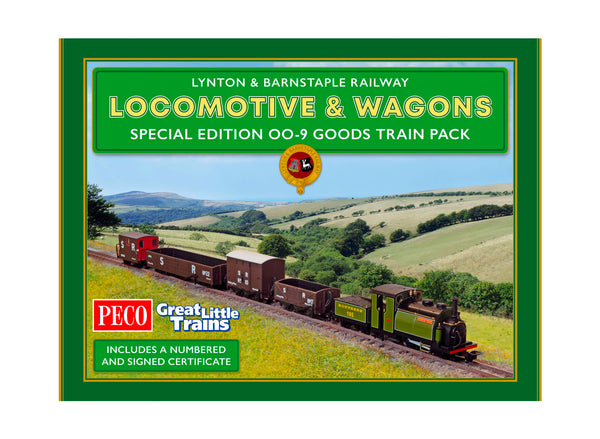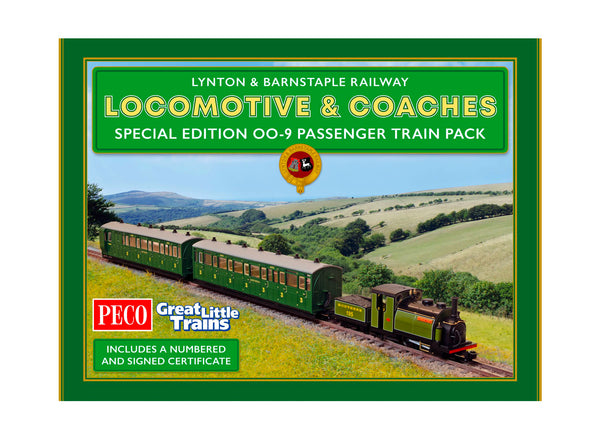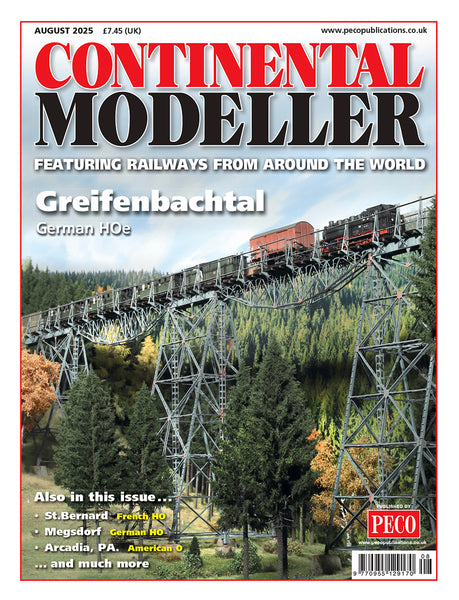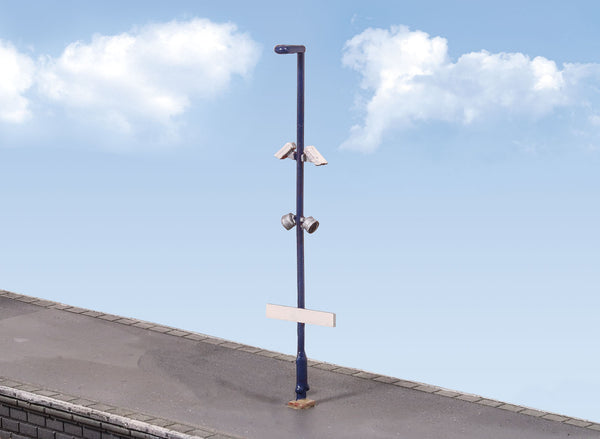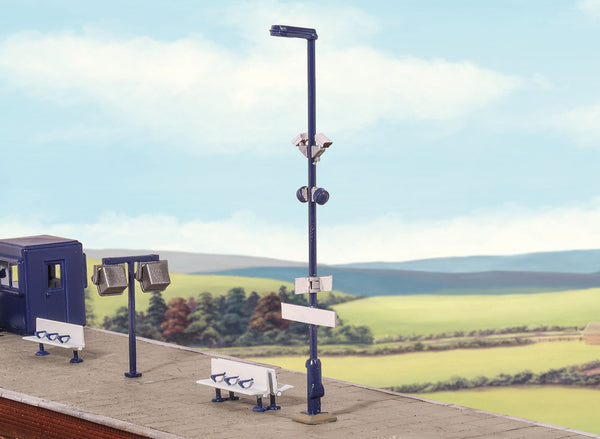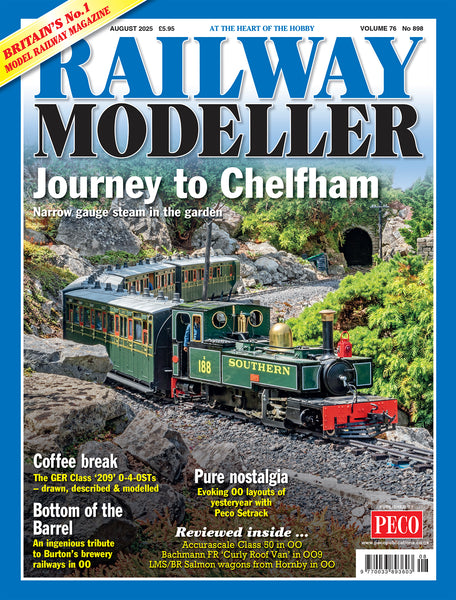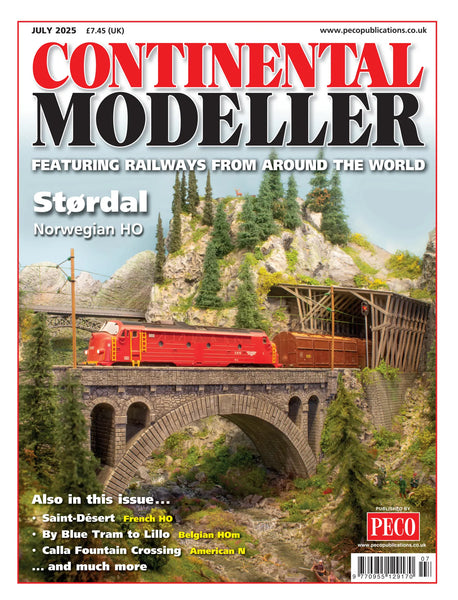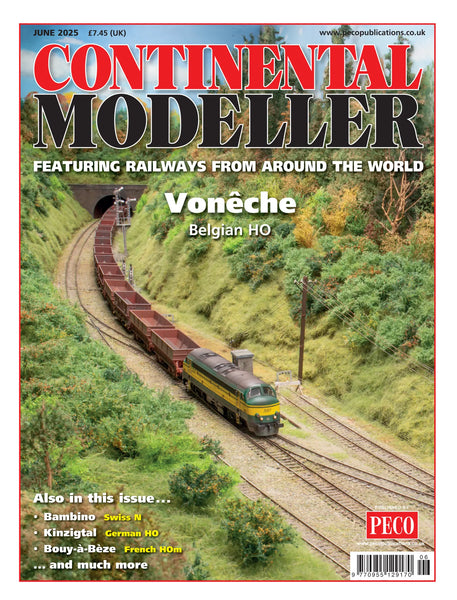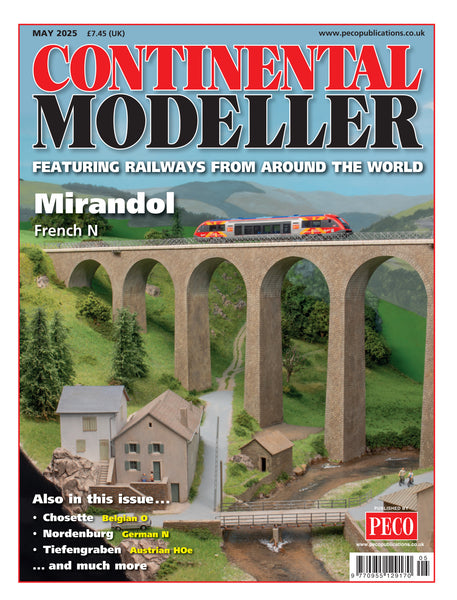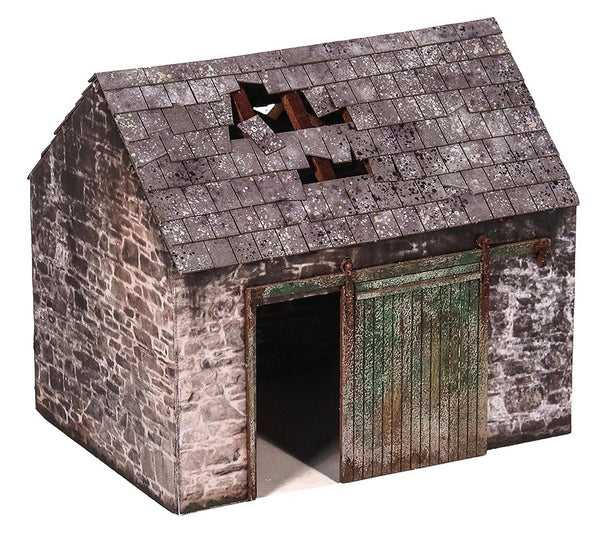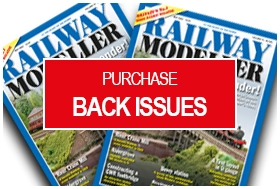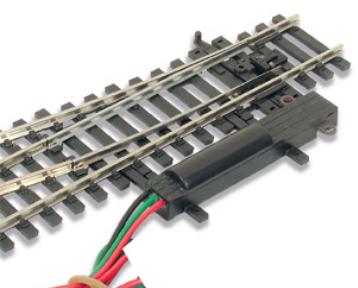DURCHSUCHEN SIE PECO-PRODUKTE
Stöbern Sie durch unser komplettes Produktportfolio.
2640 Products Found
RAILWAY MODELLER September 2025 Vol.76 No.899
RAILWAY OF THE MONTH
Buckhorn Weston
Maurice Lockwood describes how he created this extensive loft-based layout in 00 gauge, which plays host to a vast array of BR Southern Region steam-hauled services of the late 1950s to mid-1960s period.
PLAN OF THE MONTH
Island steam in TT:120
With PECO announcing a trio of laser-cut kits based on structures at Ventnor West, which will complement the forthcoming Hornby models of an Isle of Wight 'Terrier' and four-wheel coaches, modelling this station in 1:120 is set to become tantalisingly straightforward ...
PLUS ALL THE LATEST NEWS & REVIEWS...
LNER 12ton Obstwagen
500 dieser Transporter wurden in den 1930er Jahren für den umfangreichen LNER-Fruchtverkehr gebaut, der hauptsächlich aus East Anglia sowie Harwich, Hull und Leith stammte. Möglicherweise dienten sie auch außerhalb der Vegetationsperiode dem allgemeinen Verkehr und hielten bis in die 1960er Jahre. Transfers für LNER und BR. Diese fein geformten Wagenbausätze aus Kunststoff werden komplett mit Rädern und Lagern mit Steckachse, 3-Glieder-Kupplungen und Transfervorrichtungen geliefert. Dieser Bausatz wird mit vorgefärbten Formteilen geliefert, obwohl das Erscheinungsbild durch Lackieren verbessert werden kann. Gegebenenfalls sind zusätzliche Teile enthalten, die eine Modellierung des Fahrzeugs unter Einbeziehung von Modifikationen ermöglichen, die an den Prototypen während ihrer Nutzungsdauer vorgenommen wurden.
Special Edition OO-9 Goods Train Pack
Alle Eisenbahnunternehmen verfügten über einen eigenen Bestand an Fahrzeugen für den Transport von Gütern und Gütern innerhalb ihres Streckennetzes und bei Bedarf auch auf die Strecken anderer Unternehmen. Diese wurden bei der Verstaatlichung in die British Railways integriert; Einige von ihnen sollten im Zuge der Sektorisierung noch einmal neu gestaltet werden, da das Netzwerk darauf vorbereitet war, wieder in Privatbesitz überzugehen. Alle Peco-Wagen verfügen über freilaufende Räder mit Steckachsen. Die ELC-Kupplung ist zwar mit den Standard-N-Spur-Kupplungen kompatibel, sorgt jedoch für einen realistischen Abstand zwischen den Fahrzeugen und ermöglicht die Verwendung des elektromagnetischen Entkopplers PL-25 zum Fernabkuppeln.
Special Edition OO-9 Passenger Train Pack
Alle Eisenbahnunternehmen verfügten über einen eigenen Bestand an Fahrzeugen für den Transport von Gütern und Gütern innerhalb ihres Streckennetzes und bei Bedarf auch auf die Strecken anderer Unternehmen. Diese wurden bei der Verstaatlichung in die British Railways integriert; Einige von ihnen sollten im Zuge der Sektorisierung noch einmal neu gestaltet werden, da das Netzwerk darauf vorbereitet war, wieder in Privatbesitz überzugehen. Alle Peco-Wagen verfügen über freilaufende Räder mit Steckachsen. Die ELC-Kupplung ist zwar mit den Standard-N-Spur-Kupplungen kompatibel, sorgt jedoch für einen realistischen Abstand zwischen den Fahrzeugen und ermöglicht die Verwendung des elektromagnetischen Entkopplers PL-25 zum Fernabkuppeln.
CONTINENTAL MODELLER August 2025 Vol.47 No.8
In this months issue...
RAILWAY OF THE MONTH - SAINT-BERNARD
Thomas Bossonet presents his popular French HO exhibition layout, a rural terminus in the steam era which includes many distinctive local features.
GREIFENBACHTALBRÜCKE
The late Jochen Klinger and Jens Petermann created an impressive HOe display showing what was once the highest narrow gauge railway bridge in Saxony.
PLAN OF THE MONTH - MEGSDORF
Southern Germany in the snow - Norman Raven describes his family's latest HO exhibition layout, named and presented in memory of his late wife.
+PLUS!
All the latest news, reviews and layouts from around the world!
GWR-Heimsignal
Teil der „Quick Assembly“-Signalfamilie von Ratio. Damit können Sie schnell und einfach Heim- und Fernsignale senden. Dazu gehören Signalbetätigungskabel und Hebel. Mit diesem Kit können Sie ein GWR-Heimsignal nachbilden. Das Kit enthält vorgefärbten Signalarm, Kleber und Farben, die zur Vervollständigung des Modells erforderlich sind.
GWR-Heimsignal
Teil der „Quick Assembly“-Signalfamilie von Ratio. Damit können Sie schnell und einfach Heim- und Fernsignale senden. Dazu gehören Signalbetätigungskabel und Hebel. Mit diesem Kit können Sie ein GWR-Heimsignal nachbilden. Das Kit enthält vorgefärbten Signalarm, Kleber und Farben, die zur Vervollständigung des Modells erforderlich sind.
RAILWAY MODELLER August 2025 Vol.76 No.898
RAILWAY OF THE MONTH
The Dial Hill Railway
David Stockwell recounts the childhood influences that led to him modelling the Southern Railway-operated 1' 111h" gauge Lynton & Barnstaple Railway in 16mm scale, complete with an impressive replica of the line's Chelfham Viaduct.
PLAN OF THE MONTH
Pure nostalgia!
Thomas Burnham proposes an intensive 00 gauge plan using Peco Setrack components, which seeks to rekindle the excitement of Hornby Dublo layouts from the 1950s and 1960s.
PLUS ALL THE LATEST NEWS & REVIEWS...
CONTINENTAL MODELLER July 2025 Vol.47 No.7
In this months issue...
RAILWAY OF THE MONTH - ST0RDAL
From Hell to Dovrefjell - ModelSpoorGroep Valkenswaard introduce their Norwegian HO exhibition layout, an imaginary location chosen to include typical features.
CJ @ 13
Emmanuel Nouaillier demonstrates more of his techniques for intricately detailed structure modelling.
PLAN OF THE MONTH - SAINT-DESERT
A wayside station on a former PLM secondary line - Regis Deroussin introduces his home HO layout, which manages to include a station, a junction, and an impressive viaduct, in a reasonable space.
+PLUS!
All the latest news, reviews and layouts from around the world!
CONTINENTAL MODELLER June 2025 Vol.47 No.6
In this months issue...
RAILWAY OF THE MONTH - VONECHE
On the Athus - Maas line: MSC De Kempen present their new Belgian HO exhibition layout, set in Epoch Ill-IV to allow steam and diesel traction.
BOUY-A-BEZE
A seaside town served by a metre gauge secondaire - MSC Het Spoor vzw introduce their HOm evocation of a French coastal light railway.
PLAN OF THE MONTH - KINZIGTAL
German HO in the loft - Ian David describes his layout, which has been developed in two stages.
+PLUS!
All the latest news, reviews and layouts from around the world!
CONTINENTAL MODELLER May 2025 Vol.47 No.5
In this months issue...
RAILWAY OF THE MONTH - POTTENDORF
IN THE CÉVENNES - passing through the Massif Central, a set of three linked French N scenes.
BYRHH
BYRHH – part 2: Emmanuel Nouaillier crafts a scene around – and within – a product promoting a famous French brand.
PLAN OF THE MONTH - ILLIUM
NORDERNBURG – a German N permanent layout.
+PLUS!
All the latest news, reviews and layouts from around the world!
Cricketspieler
Das Paket enthält 15 Figuren (11 verschiedene Feldspieler und Bowler, 2 Schlagmänner, 2 Schiedsrichter und 1 Paar Wickets).


